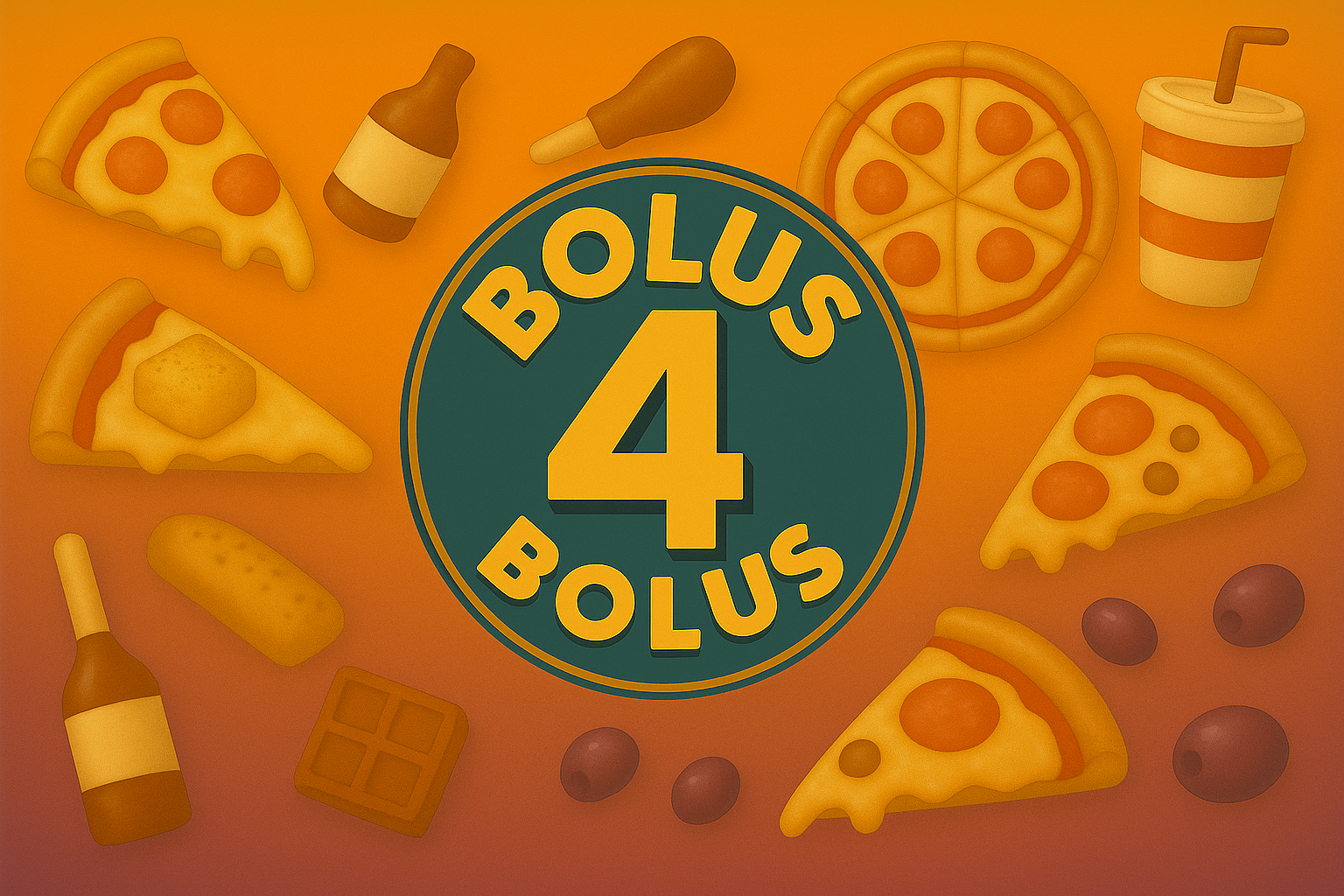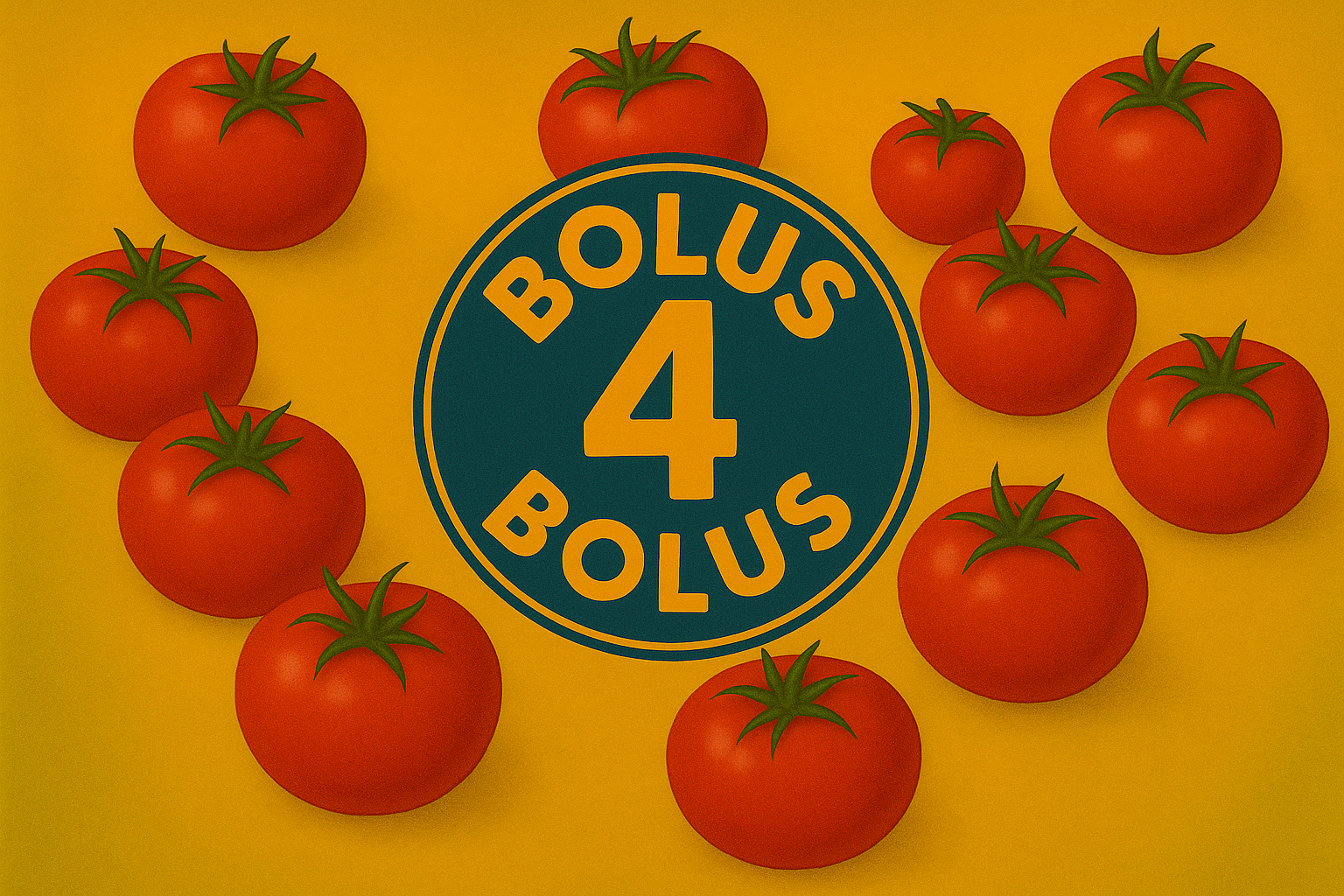#1649 Bolus 4 - Potatoes
You can always listen to the Juicebox Podcast here but the cool kids use: Apple Podcasts/iOS - Spotify - Amazon Music - Google Play/Android - iHeart Radio - Radio Public, Amazon Alexa or wherever they get audio.
Jenny and Scott talk about bolusing for all kinds of potatoes.
+ Click for EPISODE TRANSCRIPT
DISCLAIMER: This text is the output of AI based transcribing from an audio recording. Although the transcription is largely accurate, in some cases it is incomplete or inaccurate due to inaudible passages or transcription errors and should not be treated as an authoritative record. Nothing that you read here constitutes advice medical or otherwise. Always consult with a healthcare professional before making changes to a healthcare plan.
Scott Benner 0:00
Hello friends and welcome back to another episode of The Juicebox podcast.
In every episode of Bolus for Jenny Smith and I are going to take a few minutes to talk through how to Bolus for a single item of food. Jenny and I are going to follow a little bit of a roadmap called meal bolt. Measure the meal, evaluate yourself. Add the base units, layer a correction. Build the Bolus shape, offset the timing. Look at the CGM. Tweak for next time. Having said that these episodes are going to be very conversational and not incredibly technical. We want you to hear how we think about it, but we also would like you to know that this is kind of the pathway we're considering while we're talking about it. So while you might not hear us say every letter of meal bolt in every episode, we will be thinking about it while we're talking. If you want to learn more, go to Juicebox podcast.com. Forward slash, meal, dash, bolt. But for now, we'll find out how to Bolus for today's subject,
nothing you hear on the Juicebox podcast should be considered advice medical or otherwise, always consult a physician before making any changes to your healthcare plan. Jenny, we haven't done this in a couple of weeks because I've been off traveling, but we're back to do some more. Bolus for yay. Today we're gonna do vegetables. Oh, vegetables. I love vegetables. I know you do, but you're not gonna love how this list looks in the beginning. So hold on a second. So what I did was I looked up the top 10 most consumed vegetables in the US, and I got it back by weight, interestingly. Oh, so the number one thing on the list is the thing we're going to start with. On average, a person consumes 49.4 pounds of this, including frozen forms like french fries. So we're talking about potatoes, but 50 pounds of potatoes a year, which a year? That's what it says. Average American eats 50 pounds of did
Jennifer Smith, CDE 2:14
it break it down into how much of that poundage comes from French fries versus just a potato.
Scott Benner 2:22
No, it doesn't, let's just hope it's not as much as you are worried about. You know, french fries are one of those things. As I got older, I'm not, I don't care about as much. Yeah, I have a couple, and I'm like, Those are awesome. And then when I get to the fourth one, like, this is Gracie. And then I get done pretty quickly.
Jennifer Smith, CDE 2:39
I think it's also the salty part of French fries, the salty, the whole flavor component, you know, I'll tell you when my most I guess when I'm most interested in something like a french fry is after we've been at the pool in the summer, like, for hours, and then I want something salty, crunchy, something like that. Sounds really, really good
Scott Benner 3:03
to me. It's funny. You said that I want to. I want a crunchy air fry too. I don't want soft like I don't want a mashed potato in a shell. No, no. You know, it's got to have a
Jennifer Smith, CDE 3:12
nice crispy outside. And thankfully, my get a new oven that's got an air fryer in it. Okay, which is super exciting. It takes care of one thing on my counter that I very happily gave away, the giant air fryer. The giant air fryer, right? But then, you know, you can make healthier option while still having that, yeah, in your diet. So it's
Scott Benner 3:36
a good idea. I will tell you. When I was growing up in the malls, there was a french fry place. They only made french fries, Surfside fry, I don't remember, but they came off very much like you were at a fair, like in a paper cone, very salty, like you're talking about crispy. Those felt right to me, but we'll see. But let's just say you just eat a potato. So okay, I have here a medium potato is between 18 and 22 grams of carbs. Do you think that's pretty accurate? That hard to even know.
Jennifer Smith, CDE 4:08
That's kind of that is the hard one. And that's why I, I don't love some of the food lists for looking up items, because it gives it to you as a medium, well, a medium to a child might look very different to an adult, who is a six foot six man, who's 210 pounds, you know what I mean. So I think those size guides are
Scott Benner 4:34
really you want to do it by cup. Then
Jennifer Smith, CDE 4:37
kind of one of do it by cup almost makes it a little bit easier for especially, I mean starchy foods in general, like the potatoes, the corn, the peas, they're similar enough in terms of portion by cup. And cups are easy to eyeball. A woman's fist is like the size of a one cup portion, okay, all right, so that's an easy
Scott Benner 4:57
eyeball. So cooked potatoes. At about a cup. I'm seeing a range here between 20 and 37 Do you have like, a go to number for carbs,
Jennifer Smith, CDE 5:06
actually, for carbs that fist size portion of, like, mashed potatoes, for example, 30 grams. It's a good estimate, 30
Scott Benner 5:15
a cup of potatoes. We'll call it 30 grams. Yep. I don't think anybody boils a potato, but the same idea, if you were going to boil a potato and then kind of fork mash it, are you talking about a cup mashed or a cup prior to mashing it?
Jennifer Smith, CDE 5:28
That's a great question. Yeah, right. You could really, really mash it into that jam, a lot more into the cup and jam, potentially a lot more in the cup than little chunks that maybe you have three chunks compared to the mashed in, which is 10 chunks. When I'm talking mashed, I mean a one cup mashed portion, okay, is about 30 grams.
Scott Benner 5:50
Yes, let's say we're just gonna sit down and eat mashed potatoes in a cup, which I think we've all done after Thanksgiving once or twice. So don't you think somebody's it does not everybody pull out the mashed potatoes, a tiny bit of gravy, little bit of Turkey, mix it up in a bowl and heat it back up again and eat it light. I mean, I do. That's how I do my leftovers after Thanksgiving. It's like a thick turkey. Mashed potato soup is how I handle it. So with
Jennifer Smith, CDE 6:16
port. So we've got portion. Yep, we got the portion when we're talking about Bolus thing, or your typical baked potato, white baked potato kind of thing, right? What impacts how you plan to Bolus for it, like if you go through your list of your acronym, right?
Scott Benner 6:36
Measure, first measure, first evaluate. So where's my blood sugar at? Is it Which way is it moving? Do I have any planned activity coming up, like, those kinds of ideas? So, right, we've been generally just putting ourselves at, you know, like, 100 blood sugar. It's pretty stable. Yep, you know, I'd prefer it to be a little lower than that. But Okay, so we're gonna Bolus now for the potato and, you know, maybe a little bit to get that blood sugar down to 80. That'd be nice too. Go ahead, do it for me. How would you Bolus for it
Jennifer Smith, CDE 7:06
in that evaluation and even in the measuring, what's the hit factor? When we talk about carbohydrates, right? We talk about glycemic
Scott Benner 7:15
index. Yeah, a potato is not going to hit that quickly if
Jennifer Smith, CDE 7:19
you eat it alone, yeah, what's the glycemic index of, like, baked mashed potatoes? Do you know,
Scott Benner 7:25
Scott, no, but we could figure it out together. By that, I mean, you could tell me, or I could find out. It's up to you.
Jennifer Smith, CDE 7:30
Actually, fairly high glycemic.
Scott Benner 7:32
Is it there's a lot of sugar in a baked potato?
Jennifer Smith, CDE 7:35
Baked potato is all carbohydrate, a fiber too, if you eat the skin and all of that kind of stuff. Sure, there's definitely fiber in it, but it is pretty high glycemic Okay, so the glycemic nature goes down when you start to add in the other pieces, like we talked about fries to begin with, right? You might talk about baked potato being glycemic index around 85 to 90 ish if you look at most lists. But when we talk about fries, the glycemic index goes down into like 70 ish.
Scott Benner 8:07
Okay. Why does it drop? Because of the fat. The fat slows down. The glycemic hit. So if I take that same baked potato and I slop some sour cream on top of it, is it more like a french fry, then,
Jennifer Smith, CDE 8:19
or butter, or butter, Exactly, yep, stuffed baked potatoes, cheese, sour cream, all those kind of addeds in they will slow it down.
Scott Benner 8:29
Now you're making, I'm sorry, no, you're making me think about a twice baked potato. That's a nice it's a very handy vegetable for something. It's not really all that nutritious are good for you, huh?
Jennifer Smith, CDE 8:41
It's a handy vegetable. I mean, you can use it in a lot of different
Scott Benner 8:45
ways. Yeah, I'm expecting, you're expecting the potato to hit pretty quickly, so we want a nice little Pre-Bolus on there, correct? Okay, then, is it gonna hit long too, or does it depend on what we put on top of it? Well, it
Jennifer Smith, CDE 8:59
kind of goes into, you know, our What is it B Building? We build the Bolus, right, right? So we decide is the am I just sitting down and eating a potato? Mostly that, like you're not gonna just have a potato as a snack, right? So we build the Bolus around the shape of the rest of the meal, if you were, however, in a single food environment, just eating this potato Pre-Bolus is the huge focus. Okay, and you're gonna need the whole Bolus up front, absolutely
Scott Benner 9:31
right in Yep, you think you'll see a rise later,
Jennifer Smith, CDE 9:35
again, just eating alone, maybe with a little bit of salt and seasoning on it, yeah, you're going to see a rise sooner than later. And if your Bolus ratio is correct and your Bolus timing is pretty good, you're going to see that typical, what we call a bell curve, right up, comes down, lands you, really nice.
Scott Benner 9:52
Okay, all right. And so we don't really do this usually in this series, but if I take this baked potato and. I have it with a steak, or I have it with chicken, or, you know, something else. I'm the way I think about it, like, let's say there was a plate that had, I don't know, chicken tenders on it, that I made. So it's chicken breast and it's breaded, it's a baked potato and or mashed potatoes, and I don't know green beans or broccoli, like we had broccoli the other night. So when I'm bolusing that plate, I personally think most about the potato, and then, so I hit the potato just the way you just said to and then I do a little bit in my mind for the protein in the chicken and the carbs, I believe, are in the broccoli. And broccoli is pretty I mean, what six eight grams maybe for
Jennifer Smith, CDE 10:40
in a cooked cup, it's maybe six to eight grams of carb, yeah.
Scott Benner 10:44
But you find people miss that, like, so though sometimes they see green and they don't Bolus, right? So I would look at that plate that I just made up and think, Okay, here's the Bolus for the potato with the Pre-Bolus. And then, you know, like, sometimes for nuggets, I just kind of go 369, 12, like, or like, you know, I think there's four or five carbs in this, right? Maybe the breading, etc, knock it on top. I put the whole thing in at once for that plate. Is that what you would handle?
Jennifer Smith, CDE 11:09
Yeah, and if you're talking about, that's the way I would handle that particular meal, yes, okay, if we were talking about the loaded baked potato or the twice baked as you're Thank you thinking about now, what do we add on top of it that would change the way that you build your Bolus plan. It would really be, gosh, I'm having a loaded baked potato. It probably has bacon on it and sour cream and probably cheese of some kind. I guarantee, if it was from a restaurant, it probably had butter added to it while it was baking, or after all of these pieces are
Scott Benner 11:44
fat. Yeah, you could be talking about 40 or 50 grams of fat by the time you're done.
Jennifer Smith, CDE 11:49
You could be and so does that change the idea of your Bolus strategy? How much upfront, how much over a period of time? Maybe an extended Bolus, if you're using multiple daily injections, you might actually do some upfront and some at the end of the meal. Again, there are a lot of strategies that you can use, but you do have to think about those added pieces. When we're just looking at bolusing for carbohydrate,
Scott Benner 12:16
how much fat on that potato leads to not needing the entire amount up front, because it's going to slow it down so much. There's a little bit of a science experiment in there for you, yeah? So if there's some fat, maybe adjust your Pre-Bolus and work on an extended Bolus or a secondary yeah infusion, yeah. Okay, all right. Well, thank you. This was awesome.
Unknown Speaker 12:38
Good. Yay. You. Benner.
Scott Benner 12:48
In each episode of The Bolus four series, Jenny Smith and I are going to pick one food and talk through the Bolus thing for that food, we hope you find it valuable. Generally speaking, we're going to follow a bit of a formula, the meal bolt formula, M, E, A, l, B, O, L, T. You can learn more about it at Juicebox podcast.com, forward slash, meal, dash, bolt. But here's what it is, step 1m. Measure the meal E, evaluate yourself. A, add the base units, l, layer a, correction, B, build the Bolus shape, O, offset the timing, l, look at the CGM and T, tweak for next time. In a nutshell, we measure our meal, total, carbohydrates, protein, fat, consider the glycemic index and the glycemic load, and then we evaluate yourself. What's your current blood sugar, how much insulin is on board, and what kind of activity are you going to be involved in or not involved in? You have any stress hormones, illness, what's going on with you? Then a we add the base units your carbs divided by insulin to carb ratio, just a simple Bolus l layer of correction, right? Do you have to add or subtract insulin based on your current blood sugar? Build the Bolus shape? Are we going to give it all up front, 100% for a fast digesting meal, or is there going to be like a combo or a square wave Bolus? Does it have to be extended? I'll set the timing. This is about pre bolusing. Does it take a couple of minutes this meal, or maybe 20 minutes? Are we going to have to, again, consider combo square wave boluses and meals, figure out the timing of that meal, and then l look at the CGM. An hour later, was there a fast spike? Three hours later, was there a delayed rise? Five hours later, is there any lingering effect from fat and protein? Tweak, tweak for next time, tea, what did you eat? How much insulin and when? What did your blood sugar curve look like? What would you do next time you. This is what we're going to talk about in every episode of Bolus for measure the meal, evaluate yourself, add the base units, layer a correction, build the Bolus shape, offset the timing. Look at the CGM tweak for next time. But it's not going to be that confusing, and we're not going to ask you to remember all of that stuff, but that's the pathway that Jenny and I are going to use to speak about each Bolus, hey, thanks for listening all the way to the end. I really appreciate your loyalty and listenership. Thank you so much for listening. I'll be back very soon with another episode of The Juicebox podcast. The episode you just heard was professionally edited by wrong way recording, wrong way recording.com,
Please support the sponsors
The Juicebox Podcast is a free show, but if you'd like to support the podcast directly, you can make a gift here. Recent donations were used to pay for podcast hosting fees. Thank you to all who have sent 5, 10 and 20 dollars!





































